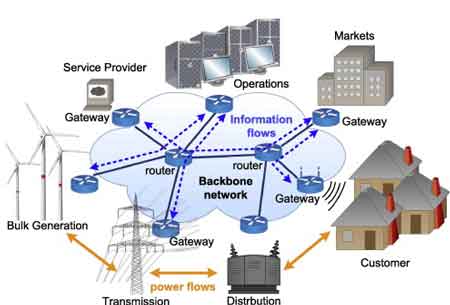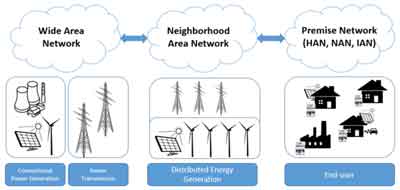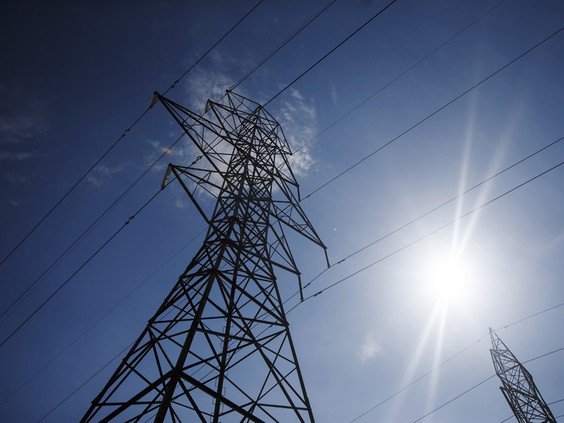Smart Grid Communication

Download Our OSHA 3075 Fact Sheet – Understanding Electrical Hazards in the Workplace

- Learn the effects of electric current on the human body
- Understand OSHA safety standards and protective devices
- Discover essential lockout/tagout and grounding practices
Smart grid communication enables real-time data exchange, automation, and secure control across modern power networks, improving reliability, integrating renewables, and optimizing grid operations with SCADA, AMI, 5G, and fiber.
What is Smart Grid Communication?
Smart grid communication refers to the digital exchange of data between grid components, enabling automation and efficient control of electrical systems.
✅ Real-time monitoring and control across substations, feeders, and field devices
✅ Secure data exchange for SCADA/AMI, DER integration, and outage management
✅ Supports reliability, efficiency, and renewable energy integration at utility scale
Smart grid communication is the foundation of a resilient, efficient, and intelligent power system. As utilities move toward digital substations, integrate distributed energy resources (DERs), and rely on real-time grid data, robust smart grid communication infrastructure becomes mission-critical. To understand the broader role of data exchange and automation in power networks, visit our Smart Grid Channel for expert insights and resources.
Modern electricity networks depend on seamless, latency-sensitive communication between substations, control centers, and field devices. This demands a sophisticated blend of fibre optics, wireless systems (like 5G and private LTE), and intelligent network architectures such as MPLS and SD-WAN. Each communication method presents trade-offs in cost, speed, coverage, and reliability—making infrastructure design a central part of smart grid planning. Explore the value of improved sensor technology and SCADA systems in delivering fast, accurate data across smart grid communication networks.
MPLS vs SD-WAN in Smart Grid Communication
Two core architectures dominate wide-area grid communication networks:
-
MPLS (Multiprotocol Label Switching): The traditional choice for critical utility applications. MPLS ensures:
-
Deterministic routing and predictable latency
-
High Quality of Service (QoS) for SCADA and protection commands
-
Bandwidth prioritization for essential services
-
-
SD-WAN (Software-Defined WAN): A flexible alternative that routes traffic dynamically using real-time network conditions. SD-WAN offers:
-
Lower deployment and operational costs
-
Centralized control and agile scaling
-
Integrated traffic segmentation and failover routing
-
Many utilities are adopting hybrid smart grid communication architectures, combining the security of MPLS with the flexibility of SD-WAN to meet the demands of diverse field assets. The role of smart grid communication in grid modernization efforts is vital for enabling real-time visibility, automation, and DER integration.
Electricity Today T&D Magazine Subscribe for FREE

- Timely insights from industry experts
- Practical solutions T&D engineers
- Free access to every issue

Fiber Optics: The Backbone of Smart Grid Communication
Fiber-optic infrastructure delivers unmatched performance for smart grid data exchange, offering:
-
Ultra-low latency and high bandwidth
-
Resistance to electromagnetic interference (EMI)
-
Long-distance communication for control centers and substations
Fiber is essential for IEC 61850-based messaging, including GOOSE and Sampled Values, supporting real-time protection and control between Intelligent Electronic Devices (IEDs). While deployment in remote areas can be costly, fiber remains the most reliable communication medium. Our guide on Coordinated Automation Schemes explains how smart grid communication supports synchronized protection and control strategies across substations.
Smart Grid Communication Technologies and Functions
| Technology | Primary Function | Key Benefits | Typical Use Cases |
|---|---|---|---|
| Fiber Optics | High-speed, low-latency data transmission | EMI resistance, bandwidth, real-time performance | Substation interconnects, control centers, synchrophasor networks |
| MPLS | Deterministic, secure traffic routing | Reliable QoS, low jitter, support for critical utility traffic | SCADA communications, protection signaling, mission-critical apps |
| SD-WAN | Software-defined dynamic routing over multiple media | Cost-effective, flexible, scalable with built-in security | Last-mile connectivity, non-critical routing, rapid network growth |
| Private LTE | Utility-owned wireless communication network | Secure, wide-area coverage, IoT readiness | Remote substations, mobile workforce, IoT sensor integration |
| 5G | Ultra-low-latency, high device density wireless communication | Real-time video, autonomous tools, massive IoT scalability | Drone inspections, video feeds, future-ready edge connectivity |
| Redundancy Methods | Ensure continuous communication during outages or faults | Fault tolerance, minimized downtime, system resilience | Dual-path routing, ring topologies, GPS synchronization |
| Cybersecurity Tools | Protect grid communication from external/internal threats | Data encryption, segmentation, access control | IT/OT network protection, SCADA data integrity, wireless security |
Wireless Technologies: 5G and Private LTE
Where fiber is impractical, wireless communication fills the gap. Utilities are deploying private LTE and 5G to enhance connectivity and reduce deployment time.
-
Private LTE enables:
-
Utility-owned networks with controlled spectrum
-
Wide-area coverage with robust reliability
-
Secure integration with mobile devices and IoT sensors
-
-
5G supports:
-
Ultra-low latency for real-time video, fault detection, and autonomous drones
-
High device density for massive IoT deployments
-
Edge computing to reduce response times at substations
-
Both LTE and 5G contribute to smart grid communication strategies that support real-time monitoring and automation.
Network Redundancy and Failover in Grid Communication
Reliable smart grid communication requires robust redundancy measures:
-
Dual-path networks (e.g., fiber + wireless) for high availability
-
Automatic failover using SD-WAN orchestration
-
Redundant routing equipment and GPS synchronization
-
Ring topologies like SONET or Ethernet rings for instant traffic rerouting
These methods ensure continuous operation during faults, enhancing power system resilience. By leveraging smart grid data analytics, utilities can turn communication signals into actionable insights for improved decision-making and outage response.
Cybersecurity in Smart Grid Networks
As grid communication systems grow more interconnected, cybersecurity becomes a top priority. Effective smart grid communication must include:
-
Secure segmentation between IT and OT networks
-
Encryption for SCADA and control signals
-
Firewalls, intrusion detection, and endpoint protection
-
SIM authentication and private APNs for wireless access
SD-WAN platforms provide built-in security policies, while MPLS ensures private, closed-loop data flow. Learn how a grid cybersecurity strategy can secure communication pathways across IT, OT, and wireless networks.
Conclusion
Smart grid communication is evolving alongside the grid itself—supporting edge computing, real-time analytics, and wide-scale IoT integration. A hybrid architecture that combines fiber, wireless, MPLS, and SD-WAN offers the performance, flexibility, and security needed for the next-generation power grid.
Investing in scalable, secure, and redundant communication systems today ensures utilities are ready for tomorrow’s challenges—and opportunities.
Related Articles








